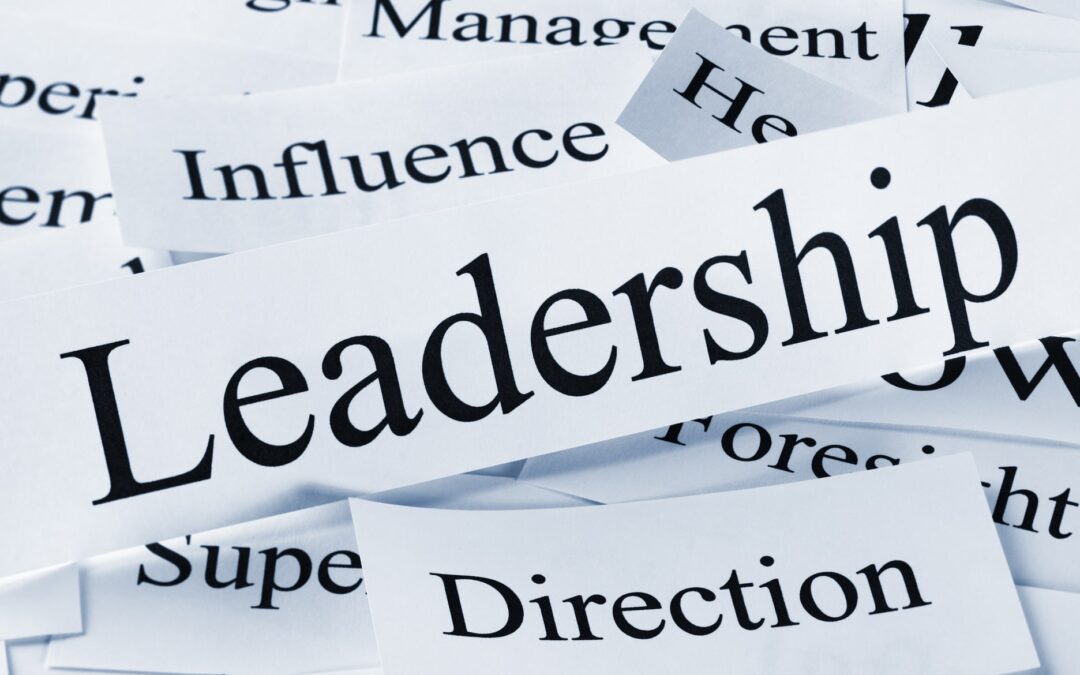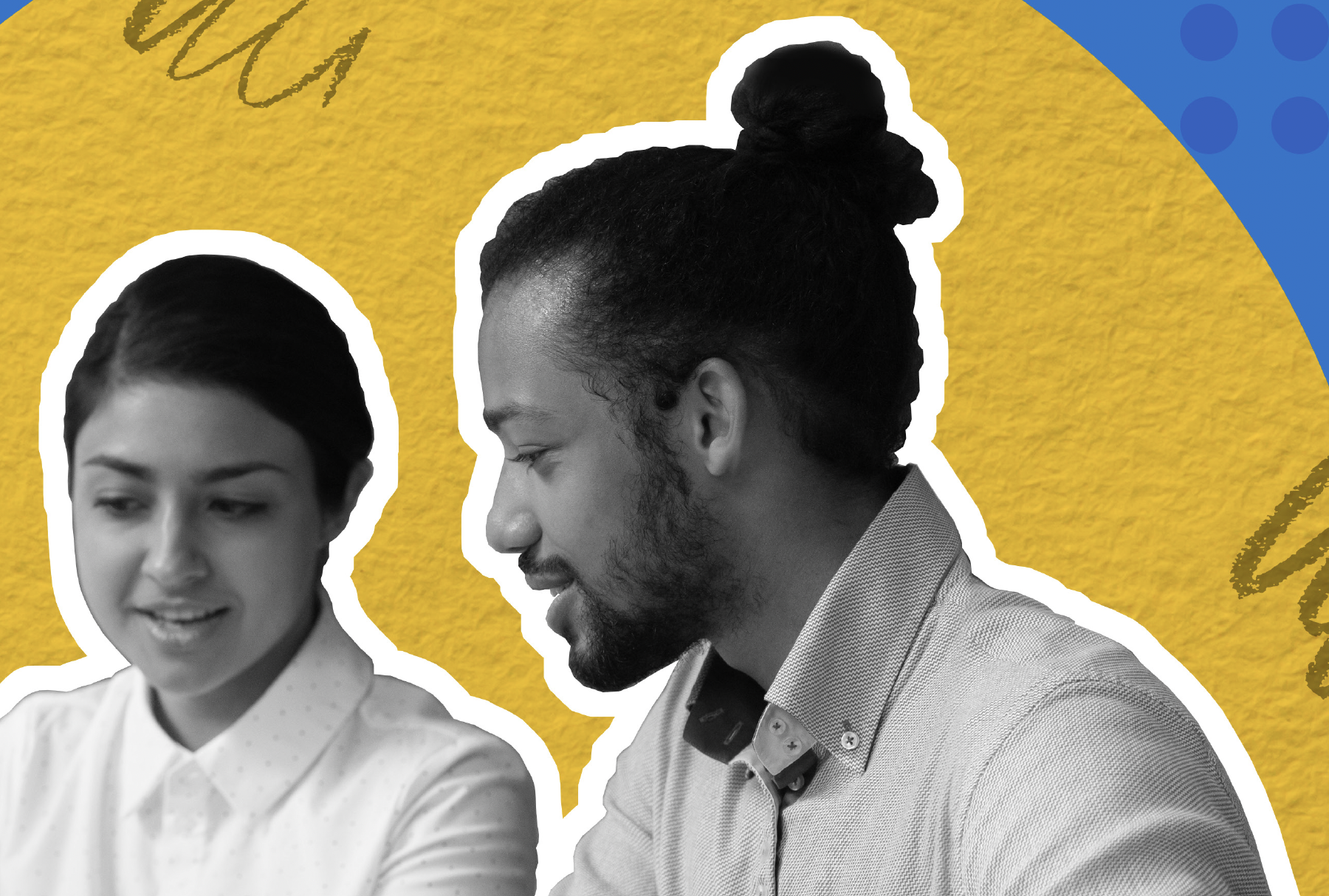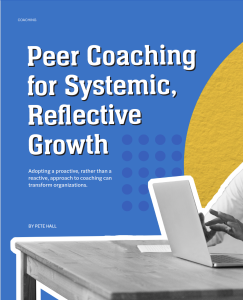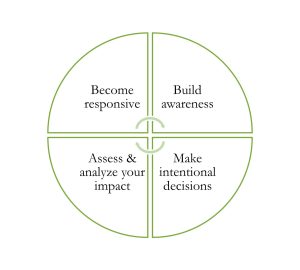
Closing the three percent gap
By guest blogger Brooke Knight

If you’re anything like me, you consider it a paramount responsibility (and a massive personal challenge) to constantly look for ways to close the “3% Gap.” You see, in any given organization, the titled leader (CEO, head coach, manager, person-in-charge, etc.) is responsible for a 3% difference in the organization’s performance. That means, with all other things being equal, a great leader will help the team achieve its identified goals with 3% more success than a not-so-great leader. That’s not much of a difference, is it?
As coaches, executives, and any other positional leaders, we want what’s best for our teams, right? We want to impact the bottom line, whether that’s revenue, expansion, production, reach, or whatever metric we use to gauge our success. It can be challenging to find ways to improve our leadership skills – despite the endless information available in reading material, courses, and online platforms that offer numerous opinions and innovative strategies to help you, as a leader, become Best-in-Class. Sifting through the minutiae can be an arduous task to say the least, and it might actually be distracting us from the work that closes the 3% Gap.
So, before we dig any deeper in the exploration of new and fancy ways to achieve greatness, it is ultra-important we strike a balance and create some self-awareness as it relates to our own role, and how important we are…or are not. There is no question the majority of us love what we do as leaders, though most of the time we are not driven by (nor financially compensated for) the copious hours, the family sacrifices, and the ongoing compassion we exude based on what feeds our souls.
Which brings us to the 3% Gap. There are a lot of variables that contribute to an organization achieving its goals: the right people, at the right time, in the right conditions, can lead to some pretty amazing results. And we know leadership matters. The problem is this: The leaders of winning teams often receive too much credit. On the flip side, when the teams falter, their leaders frequently wear too much of the blame. Remember: even a great leader will only get an organization 3% closer to the goal.
Think of this in terms of sports teams. In collegiate and professional sport, both men and women are paid millions of dollars to fill up that 3% Gap successfully, and some have repeatedly proven their merit in this regard. Off the top of your head, you could probably name a handful of famous, championship-caliber coaches. They’ve traveled the 3% highway for years. And what sets them apart? What do they do to get the most of their 3%? Simply this: since they acknowledge their personal impact is limited, they channel all their energy towards their players, towards building a thriving culture, fostering an unwavering team chemistry, and getting them to jell in pursuit of a common goal.
The best coaches – the best leaders – know it’s not about them. It’s about those they lead.
As a collegiate and professional baseball coach, I consider myself one of the most fortunate individuals on the planet. I’ve had the privilege to communicate, share, love, guide, drive, and challenge some of the very best young human beings – and when we’ve won championships, it’s not because of brilliant coaching, let me assure you. It’s because wedo all we can to put our collective success above anyone’s personal needs. Over the years, I’ve learned from my players, and I’ve looked to steal my own little bits and pieces of gold from each and every one of them. The ongoing exercise in human behavior is never dull, and candidly, there is no perfect recipe or cookie-cutter plan. We are all growing in different directions at different times, and with each new team comes a new group of faces, all with unique strengths and weaknesses. That’s the beauty of the role, and embracing it is paramount for success. If we can’t embrace that, our efforts at mentorship will eat us alive from the inside-out.
I recently learned a very valuable lesson, and one that still doesn’t sit well with me as I type away. This 3% Gap? It’s fragile. Really fragile. Even more than I had previously thought (and why society gives insane value to those who are the best in their respective fields and consistently on the cusp of greatness). I’m not going to get into specifics, but let’s just say that the 3% bounty can’t be pocketed if you don’t have the right souls on the bus. And it doesn’t take more than 1-2 non-invested individuals. I’m not saying for a minute that those who don’t belong on the bus are ‘bad people’. It just means they may not be invested in the road trip the bus has endeavored to explore. If there is any question, character and trust outshine skills and individual performance every time. To ensure the bus arrives at the desired destination, ensuring the right people are on the bus is paramount. You want to win championships in sports and in life? Make sure you have enough talent on the bus, in the room, in the office, on the team. But if your gut is telling you that you can’t trust everyone on the bus to change that flat tire on a sweltering desert day, get them off the bus…even if it means settling for a lower performer who would selflessly change every tire if it meant being a great teammate.
These are lessons I’ve also brought into my role as owner of my mortgage company. I try to instill a mindset that no one is above the team – especially not the leader. Our office is not a hierarchy, it’s a family. I bring great energy every day, no matter what. I treat all the members of the team with respect, showing humility and deferring credit. I learned early in my coaching career: When we win, praise the team. When we lose, take responsibility. The majority of the time these simple actions build trust and provide an opportunity to fill the 3% Gap the right way.
This 3% Gap is a critical piece to every organization. Additionally, for those that retain humility and keep an ongoing growth-oriented mindset, the 3% Gap will never be too far from their fingertips. Don’t be afraid to remind your players, students, employees, and disciples that you are fully aware that your simplified goal is to be exceptional at the 3%. There is no shame in filling our role with great pride, just as we would ask from every coach or player in our organization.
Brooke Knight is a champion: in the corporate world (as a business owner) and in sports (as a baseball coach). He’s been a friend and colleague of Pete Hall’s for many years.
Pete Hall is the President/CEO of Strive Success Solutions. You can reach him via email at Pete@StriveSS.com.
Stay Up To Date
Stay up to date with the latest news updates and blog posts
Share Article
Share this post with your network and friends
Corporate Speaking
Keynote Speaking
Workshops
Individual Coaching
Leadership/Executive Coaching
Personal/Life Coaching
© Copyright Strive Success Solutions 2023. All Rights Reserved.








Recent Comments